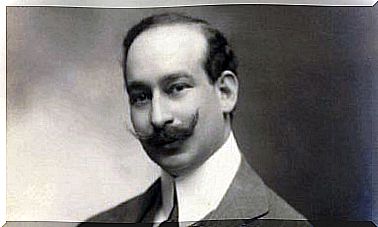Albert Ellis’s TREC

Albert Ellis’ TREC is an acronym for Rational Emotive Behavioral Therapy, which was developed from the principles of cognitive psychology. Faced with the inefficiency of behavioral therapy (based on stimulus-response) to treat some psychological disorders, with a sharp cognitive cut, work began on a new perspective that would generate results. Thus, TREC is an example of pioneering techniques that have shown great effectiveness in disorders such as anxiety and depression.
This therapy is based on an ABC model of cognitive psychology first proposed by Albert Ellis. In this model, it is proposed that activation events (A) by themselves do not cause emotional, behavioral or cognitive consequences (C): the latter will depend on how the event is perceived or interpreted (B). In short, A (events) provoke B (interpretations) and these provoke C (consequences/conducts).

Psychological Foundations of TREC by Albert Ellis
The ultimate goal of TREC is to eliminate and modify C. On the other hand, C can be altered by modifying both events (A) and their interpretations (B). However, it is obvious that, on many occasions, events are unalterable. Thus, in this type of therapy, the work with the patient is focused on trying to change some of the interpretations he has and making him recognize the behaviors he intends to change.
genesis of disorders
Albert Ellis, after a plethora of researches, found that all or most of us develop irrational thoughts that make us see reality in an extremely negative way. He even found more than 200 types of thoughts that fostered this negative view, which resulted in anxiety disorders and depression. Currently, we can group these forms of irrational thinking into 4 types:
- Demands or demands : eg: “If my partner liked me, he would have given me a present”.
- Catastrophism : eg: “If I do poorly in the interview tomorrow, it will be the end of my career and I will end up dying”.
- Low frustration tolerance : eg: “I’m afraid to go to this party because I’m sure everyone will reject me, this is very difficult and I can’t stand it”.
- Depreciation : eg: “I burned my food, I am useless, I do everything wrong”.
These types of thinking are considered irrational because they are false, illogical, extreme, or too demanding. Ellis argues that they are the result of absolutist beliefs of “shoulds” or “obligations” present in our internal dialogue.
Maintenance of disturbances
The aforementioned ways of thinking have negative emotional or behavioral consequences. But what keeps them going? According to TREC, there are three types of insights or ideas that contribute to the inconvenience or discomfort persisting over time :
- Insight 1 : Disturbance is determined by irrational interpretations that derive from negative events. However, if a person believes that the emotional upset is due to the event and not its interpretation, he will try to modify the situation without success – the real problem is his irrational beliefs.
- Insight 2 : If people keep reaffirming their rigid and extreme beliefs, they will resist change, so the upset will remain.
- Insight 3 : Past-centered thinking will cause irrational events and beliefs to stagnate. Only by working in the present and in the future will it be possible to change perceptions and, with them, discomfort.

TREC Features
To talk about what rational emotive behavioral therapy should be, we’ll look at two perspectives. The first one will be the therapeutic style, which will talk about the strategies or methods. The second, the relationship that is built with the patient, the way the therapist interacts with him.
The therapist’s attitude will have the following characteristics:
- Active and Direct : It is important for the therapist to adopt an active attitude and to offer alternatives to the patient’s irrational beliefs.
- Verbally active : it is essential that the dialogue is fluid and active for both parties, as the functioning of therapy is based on discussion and debate.
- Didactic : the therapist must behave like a good teacher teaching his apprentice to generate a change in himself.
- Promoting changes in the philosophy of life : an essential aspect is to bring about changes in the patient’s way of thinking, in their philosophy of life.
- Do not foster catharsis : although it may alleviate discomfort at first, the intentional expression of emotions derived from beliefs can strengthen those beliefs.
- Be flexible : each patient is a different world, with their own and characteristic way of thinking. If the therapist is not flexible and able to adapt, he will not be able to bring about change in his patients.
On the other hand, the relationship with the patient will be based on the following principles:
- Unconditional acceptance : there must be no value judgment, neither positive nor negative, in relation to the patient. This should show that patients are equally accepted as anyone else – as flawed human beings – neither useless nor valuable, since one or several behaviors define no one.
- Empathy : Deeply understanding the patient’s thinking is essential to understanding the nature of their beliefs. The therapist must understand the individual’s philosophy of life to help them change.
- Be genuine : the therapist must be open and approachable. You can even talk about your private life when it seems appropriate, in order to exemplify that everyone has difficulties and that everyone makes mistakes. Personal experience serves both to offer solutions and to normalize certain emotions.
- Having a sense of humor : is one of the key aspects of TREC, as this is a therapy based on restlessness and tranquility. The therapist can use humor to highlight aspects of their irrational beliefs, always without belittling or disrespecting them: the therapist, in this sense, must consider that each patient’s sensitivity is different.
- Informal therapeutic style : TREC works best in a relaxed environment and away from the formal aspects of therapy. The patient should view therapy as a friendly, fun chat in which they can talk about their concerns and beliefs in a relaxed way.

TREC is an interesting therapy and, to a large extent, satisfactory for patients. It helps to change life philosophies, to assume a more protective style in the face of problems that cause anxiety or depression. And, furthermore, it is supported by a great deal of scientific evidence . This therapy places Albert Ellis as one of the most important figures in clinical psychology.









